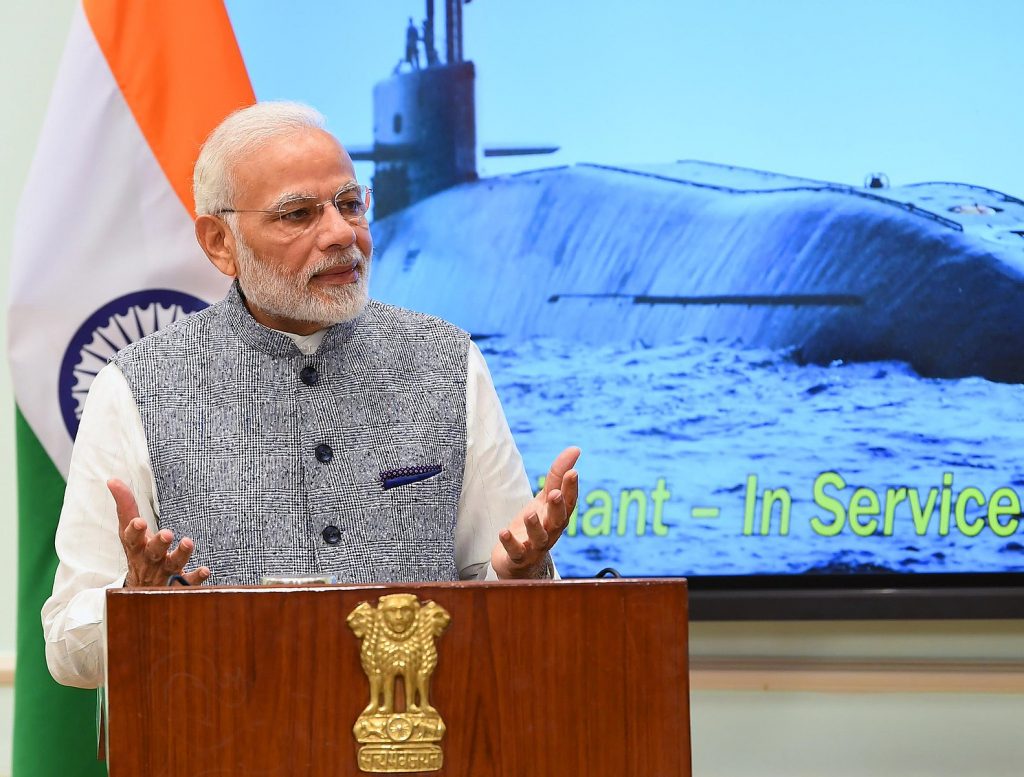
What’s known—and not known—about India’s nuclear weapons budget
Posted: 4th November 2021
By Urvashi Sarkar | November 2, 2021

Indian Prime Minister Modi addresses the crew of INS Arihant. Accessed via Wikimedia Commons. Credit: Prime Minister’s Office. Copyrighted work of the Government of India, licensed under the Government Open Data License – India (GODL).
In 2016, India inducted its first nuclear-powered ballistic missile submarine, the INS Arihant, into its navy, extending nuclear military capabilities from land and air to the sea. “Arihant” translates to “destroyer of the enemy,” a name chosen for its “subtlety and appropriateness.” A year after Arihant’s induction, the vehicle reportedly suffered damage, prompting a member of Parliament to ask about the cost of repairs. A defense minister responded, “The information cannot be divulged in the interest of National Security.”
In India, acute poverty persists against a backdrop of urgent development priorities that jostle for financial resources. Meanwhile, India’s lack of transparency around nuclear weapon expenditures—including the government agencies responsible for approval, spending, and audits of those expenditures—carries on. Indian taxpayers deserve to know how much their government spends on nuclear weapons, particularly compared to spending on education and health. Also, transparency on nuclear weapons expenditures would signal to the world that India’s claimed commitment to disarmament is not empty talk.
https://thebulletin.org/2021/11/whats-known-and-not-known-about-indias-nuclear-weapons-budget/?utm_s…